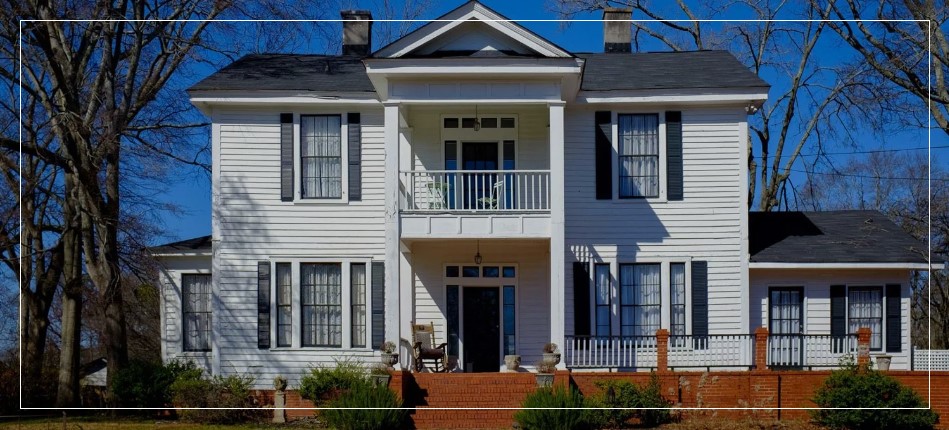The 1800s
Captured by the 52nd Illinois Infantry, signatures of convalescing Union soldiers still appear on the walls of the downstairs parlor. The lawn in front of the house was the site of the historic Battle of Jonesboro, which led to the fall of Atlanta and the end of the Civil War.

The 1930s
- Robert Sullivan, Artillery
- James B. Washington, Division 14
- John B. Wuilell Saler
- George W. Harding
- Thomas, Chief-in-Command, 1st Division
- Doc B. Thompson
Research and Remnants of the Bible
Seeing Thompson’s name prompted Mrs. Faye Adamson Secik, who grew up in the house, to seek more information from the Veteran’s Administration in Washington, D.C. They had no way of knowing that years after their death, their signatures in 1864 would arouse the curiosity of one of the descendants of the defenders of Jonesboro.
When the writing was discovered in 1936, most of the breastworks built for the battle were still visible north and south of The Warren House. The Adamson children recalled that on rainy days they could collect a bucket of the minie balls used during the fighting. These existed until 1940 when they were plowed under.

Research and Remnants of the Bible
Seeing Thompson’s name prompted Mrs. Faye Adamson Secik, who grew up in the house, to seek more information from the Veteran’s Administration in Washington, D.C. They had no way of knowing that years after their death, their signatures in 1864 would arouse the curiosity of one of the descendants of the defenders of Jonesboro.
When the writing was discovered in 1936, most of the breastworks built for the battle were still visible north and south of The Warren House. The Adamson children recalled that on rainy days they could collect a bucket of the minie balls used during the fighting. These existed until 1940 when they were plowed under.




